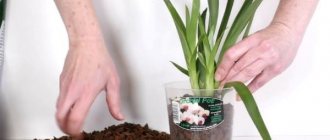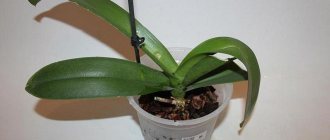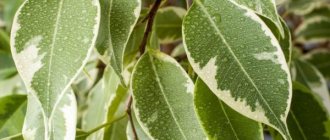Every year the tropical beauty of the orchid has more and more fans who want to grow an exotic miracle at home.
The hybrid forms of orchids that have filled the flower market, although adapted for growing at home, are still quite capricious and demanding to care for. A slight change in care rules or growing conditions affects the development of the plant.
One of the most common problems for gardeners is
the unexpected wilting and then falling of flowers from a flowering, apparently healthy plant.
Having studied the sources, recommendations and advice from experienced flower growers, we will try to understand the causes and methods of eliminating this problem. Orchids are very sensitive to the slightest changes not only in the place of growth and conditions, but even turning a flower pot can cause stress in the orchid, which will immediately affect the condition of the flowers.
Also, during the flowering period, orchids really need a sufficient amount of lighting, certain humidity and temperature in the room.
Even small changes in growing conditions or errors in care will affect the condition, development and possible wilting of flowers. Next, we will look at the main reasons why the buds withered and what to do to prevent such a situation.
Plant overheating
Without understanding why orchids dry out, you need to remember that hanging a flower for a long time on a window that is located on the sunny side of the house, or staying close to a powerful heating radiator can trigger the wilting process.
This is due to the fact that the orchid begins to lose moisture, its roots weaken, as a result of which the leaves of the plant begin to turn yellow and the flowers begin to fall off. You need to protect your green friend from direct sunlight and prepare a more suitable place for him to stay.
Hypothermia
Hypothermia is a common cause of inflorescences falling off. If you purchased an orchid in a store in winter and take the plant home, remember:
Transportation in winter causes hypothermia. First aid: pack the plant in cellophane and paper. The packaged delicate orchid tolerates frost for no more than 15 minutes.
Causes hypothermia and drafts when ventilated . It would seem that resuscitation of the plant is simple: eliminate ventilation. But the difficulty of such a step lies in the fact that the tropical guest does not tolerate stuffiness well and cannot do without proper ventilation.
Important! The orchid needs ventilation. But it is unacceptable to leave the flower in a draft. In summer, take the orchid outside or onto the balcony.
Summer air baths are useful , but remember that cold nights will destroy the capricious heat-loving flower. But what to do if preventive measures did not help and the leaves fell? Recommendations step by step:
- Wilted flowers should be removed;
- move the plant to a warmer place;
- eliminate drafts, install gentle ventilation;
- Leave the plant alone; it does not need replanting.
Shock
A change of habitat always causes stress for the plant. This is similar to acclimatization in humans.
New living conditions, a different level of humidity in the room, a different temperature regime - all this is a real shock for the orchid. The plant reacts to such innovations by shedding buds and flowers. This is absolutely normal. Any living creature needs time to adapt, and an orchid is no exception.
Reasons leading to wilting of orchid leaves
Epiphytes and lithophytes are kept under close control due to the transparent pot. You can observe how the root system develops and control the process at any stage. In addition to the difficulties associated with unusual conditions of detention, various factors arise that lead to withering.
orchid leaves wither
Lack of light
The orchid is afraid of direct sunlight, but loves light. An insufficient amount of it provokes the process of withering of flowers.
The plant must be kept in a sufficiently lit place, especially in winter, when daylight hours are reduced. It is advisable to purchase a phytolamp if the lighting in the apartment does not meet the needs of the flower.
What to do if the newly opened flowers become sluggish?
Before deciding on the most drastic measures, you need to check all the options.
- Remove the flower from a sunny place or shade the scorching light.
- In winter, cover the heating radiators if the pot is placed on a windowsill.
- Avoid exposure to drafts.
- Increase humidity with a household humidifier.
- If there are visible signs of drying out, try watering the plant.
- Check the flower for harmful insects. Are there any sticky residues left by powdery nigella?
If you have tried everything and to no avail, perhaps the problem is waterlogging of the soil , then you should:
- Remove the flower from the pot.
- Rinse the roots under running water.
- Remove damaged areas and treat sections with an antiseptic.
- Leave to dry overnight.
- Replant the orchid in new soil with a good drainage layer.
- Water only after the soil has dried.
How often to water an orchid at home
There is no clear answer to this question. It all depends on a combination of factors and conditions in which the plant is kept. Watering is affected by the time of year, air humidity, room temperature, and the condition of the root system.
There are several recommendations that you should follow when wondering how often to water an orchid at home:
- Better less often, but more abundantly, than vice versa.
- The water temperature should be slightly above room temperature.
- It is preferable to water the flower in the morning.
- Protect the flowers of the plant from water.
- Plant roots should be kept in water for no more than half an hour.
- There should be no liquid remaining in the pot; it should drain completely.
- Water should not contain foreign impurities.
In order to find out whether an orchid needs watering or not, you need to slightly rake the substrate in the pot. If it is wet, no procedure is required. The roots of the plant also indicate its necessity - if they begin to acquire a light shade, you immediately need to water the flower. If the roots are deep green, no watering is required.
For the procedure, tap water is usually used, which is left to stand for three days. It is advisable to purchase a filter and pass liquid through it for the orchid, since soft water has a beneficial effect on the condition of the plant.
In summer, the orchid is watered several times a week; in winter, once is enough. During the flowering period, the flower should be moistened every 3 days.
It is worth recalling that excessive amounts of moisture can cause the orchid roots to begin to rot. The plant tolerates short periods of drought quite easily, but this should not be abused. Insufficient moisture leads to drying of the rhizome and death of the flower.
In what cases will flowers be lost completely or partially?
Frostbite
Hypothermia or frostbite of a flowering orchid will immediately affect not only the loss of color, but can even destroy the plant if the degree of frostbite in the root system is high enough.
The most common causes of hypothermia are:
- transportation of orchids in the winter season;
- incorrectly selected temperature mode;
- a flow of cold air caused by ventilation of the room during the cold season.
The result of damage depends on the degree, time and areas of cooling.
Natural aging
The duration of flowering depends on:
- varieties of orchids;
- general condition;
- number of peduncles and flowers;
- growing and care conditions;
- age.
Depending on the species and selection, orchids can bloom from a week to six months , or even more, with proper care. Therefore, when purchasing a new flowering orhu at a flower center or store, it is difficult to determine the duration of its flowering.
Usually, the sudden fall of flowers with a healthy plant and proper care can only mean the natural process of the end of flowering.
The age-related decline of flowers in most home orchids occurs after 5-7 years, although in natural conditions they bloom much longer. But indoor growing conditions and “excessive” or improper care significantly reduce the active life span of orchids.
Attention! During natural aging, flowers fall off from bottom to top, and during diseases and other unacceptable processes - from any place or all at once.
Root death
Damage to the root part is the main care mistake for beginners. Common care mistakes that lead to damage to the root system, which subsequently affects the loss of flowers, buds, and sometimes even the development of the plant:
- overflow;
- underfilled;
- incorrectly selected temperature conditions;
- poor water quality;
- inadequate feeding.
Poor quality irrigation water is one of the reasons for the falling of flowers and buds.
Moreover, partial falling does not occur. Lack of nutrition and moisture affects the entire plant when the root part dies.
Changing the conditions of detention
Changing the growing environment causes a stressful situation, which naturally affects the flowering phase. Adaptation to new conditions is painful , as a result of which the flowers wither and fall off. The buds eventually do not bloom, but fall off.
Care
In order for the plant to delight you with its flowering as often as possible, proper care of the orchid after flowering is necessary.
After the flowers have fallen, you need to trim the peduncle - it must be dry. This is done to ensure that the process of new flowering of the orchid occurs as quickly as possible.
If the dried peduncle is not cut off, the plant will begin to lose its strength in attempts to resume flowering on the dead organ.
Next, you need to provide the orchid with peace. To do this, transfer the flower to a cool, bright room. The air temperature should not exceed 20 degrees Celsius. The time spent in rest mode varies from two to four months.
Don't forget about watering and spraying. Fertilizers should not be applied during this period. Complete rest is the key to successful flowering. As soon as young shoots appear, the plant is returned to its usual habitat.
Why do the leaves turn yellow and dry?
The occurrence of such an unpleasant situation, when the leaves of an orchid turn yellow, may be accompanied by the following reasons:
- Cramped pot. The flower is constantly increasing in size, and accordingly, it needs a place more suitable for life. It is necessary to monitor the condition of the root system. Therefore, when choosing which pot is best for an orchid, you need to remember that the roots should be freely located in the container.
- Stress. A sudden change in environment, temperature, or moving a plant to an unprepared habitat can negatively affect the health of the leaves and the entire plant as a whole.
- Aging. If the orchid has bloomed for 3 or more seasons, then yellowing of the leaves is a completely normal process. If there are shoots, it is worth planting them in a new pot.
What is better to treat: folk or chemical means
A symptom of falling flowers and buds in an orchid may be due to the appearance of an unwanted guest . Mealybull is a small harmful insect, up to 5 mm, oval in shape. On contaminated surfaces it leaves a thin cobweb, a sticky trail. It is difficult to fight him, but it is possible. If there is minor damage to the flower, that is, the infection is in the initial stages, then folk remedies will help:
- soap solution;
- tinctures of citrus peels, garlic, calendula;
- onion;
- essential oils.
At later stages, it will not cope without chemistry, copper sulfate and similar fungicides. Of course, traditional methods are easy to implement, neither toxic nor harmful, but not always effective .
Below is a visual video with an example of how to get rid of mealybugs using laundry soap:
How to dilute a succinic acid tablet for an orchid?
Succinic acid is a unique fertilizer for orchids. Thanks to it, the flower copes with stress more intensively, enjoys longer flowering, grows and recovers faster, and receives the necessary saturation.
The correct dosage is the key to success. If the drug is used in tablets, the application regimen is as follows: one tablet is completely dissolved in 200 ml of water. The next step is to add another 800 ml of water to the resulting concentrate.
Orchid rhizomes should be soaked in the resulting solution for 20-30 minutes. It’s easy enough to spray the leaves; the main thing is to prevent the solution from penetrating into the leaf rosette. To do this, it is best to plug it with a piece of cotton wool or cotton cloth.
Video on the topic
Next, you can watch a video that talks about the reasons for orchid flowers drying out:
Drying and yellowing of the orchid is a fairly popular problem. But don’t panic and throw away your favorite plant. It is necessary to find out the reason why problems arise with the stem, leaves or roots in order to try to eliminate it in the future. On our portal you will find a lot of useful information on this topic.
Selection of capacity
When choosing a pot for an orchid, you must follow a number of important rules and principles. Firstly, it must provide ventilation for the root system. Therefore, it is best to purchase a specialized container for orchids, which has small holes. Thanks to them, complete drainage of water from the rhizome is ensured.
Secondly, the pot must provide the flower with sufficient lighting. The best option would be a completely transparent copy.
Thirdly, the material from which the pot is made should not be heated or cooled. The ideal option in this case is plastic. The size of the pot is no less important; it should not be too loose.
Experienced gardeners use ceramic containers in their arsenal. Their main advantage is high air and moisture permeability and protection of the rhizome from overheating. However, a ceramic pot has an extremely unpleasant drawback - the roots of plants stick to the inner wall during long-term use, which can result in injury to the flower during replanting.
A glass pot is a very good option that provides the plant with the necessary amount of light. A significant drawback is the lack of drainage holes. Such products are not suitable for ordinary people, since you need to know the exact amount of water required for irrigation. And this task is only feasible for professionals.











